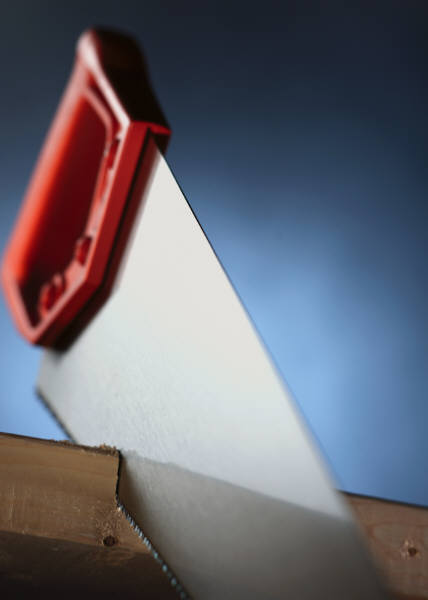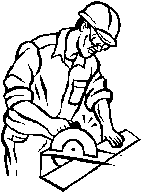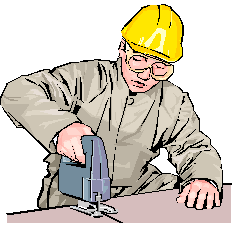Machine Guarding eTool
Saws » Handheld Saws


A handheld saw is portable and requires only the users hands to operate. Handheld saws can be powered or manual. Powered handheld saws have a greater potential to be dangerous.
Operator Involvement
When using powered saws, the operator is responsible for holding the saw correctly and depressing the pressure control (trigger). The operator then maneuvers the saw according to how the stock is to be cut. Once the task is completed, the operator's finger is removed from the trigger to stop the motor.
Regulations for basic powered handheld saws fall into two categories:

Handheld Circular Saws
Circular saws are used for straight sawing. Depending on the blade, they cut either across (crosscut) or with (rip) the grain of the wood.
Operator Involvement
The operator adjusts the height of the blade and, while holding the stock, pushes the blade through the work-piece to perform the cut.
Potential Hazard
-
Contact with the turning blade.
Solutions
-
Portable circular saws must have an upper guard that covers the entire blade of the saw and a retractable lower guard. [29 CFR 1926.304(d)]
-

Hand-held circular, reciprocating, saber, scroll, and jig saws with blades greater than one-fourth inch must be equipped with a constant-pressure control. [29 CFR 1926.304(f)]
Additional Safety Measures
-
When using a hand-held saw, the blade should be directed away from the aisle and any people who are in close proximity to the saw.
-
Use the proper blade for the material being cut.
-
Maintain sharp blades.
-
Always wear eye and face protection.

Handheld Jig Saws
Handheld jig saws are useful for precision-cutting, intricate curves and patterns in thin stock. They have thin blades that move rapidly up and down. The blade is held in upper and lower chucks that pull it tight and keep it from bending.
Handheld jig saws are generally not considered to be as dangerous as other saws, however, contact at the point of operation can cause hand and finger injuries. Contact with the blade can also occur below the stock being cut. All portions of the blade must be guarded.
Operator Involvement
The operator is responsible for holding the jig saw with one hand while the other hand is used to secure the stock. A trigger is depressed and the saw is moved over the stock as the blade cuts through the material. The trigger must be held throughout the entire cutting process.
Potential Hazard
-
Contact with the moving blade may occur.
Solution
-
Guard the blade with an adjustable or self-adjusting guard both above and below the stock being cut. [29 CFR 1910.213(r)(4)]

Potential Hazard
-
Wood chips and splinters may be thrown by the cutting action.
Solution
- Guard the blade with an adjustable or self-adjusting guard as necessary. [29 CFR 1910.213(r)(4)]
Additional Safety Measures
-
Use the proper size of blade for the work being done.
-
Maintain sharp blades.
-
Make turns slowly. Do not make sharp turns with a wide blade; use a narrow blade for sharp turns.
-
Always wear eye and face protection.
-
Wear guard (for example, mesh gloves, metal guards) on the free hand to protect it from flying particles.

